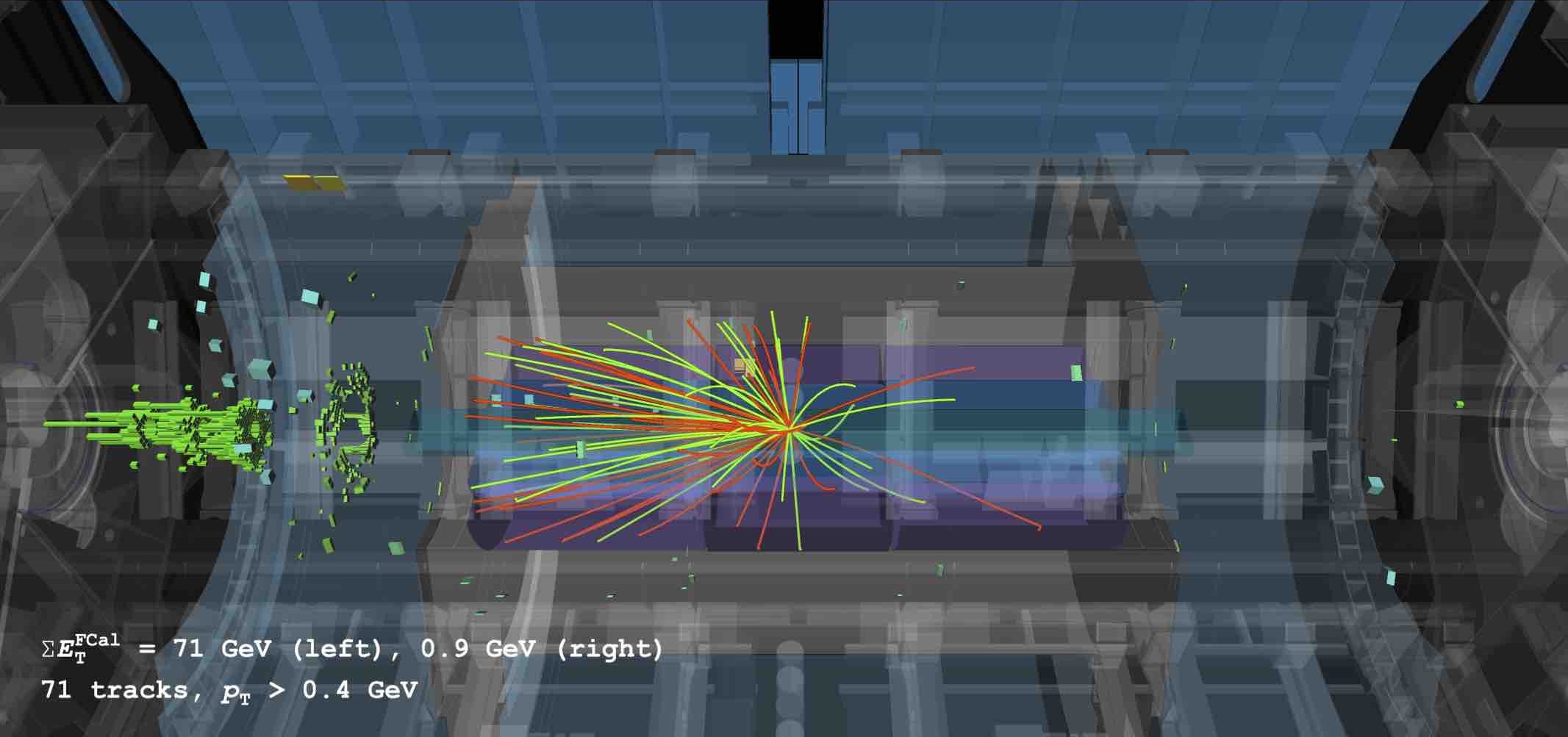Studying “Little Bangs”: exotic collisions probe the size of quark-gluon plasma
13 July 2021 | By
A new result from the ATLAS Collaboration studies the interactions of photons – particles of light – with lead nuclei at the Large Hadron Collider (LHC). Using new data collection techniques, physicists revealed an unexpected similarity to the experimental signatures of the quark–gluon plasma.
When in operation, the LHC dedicates about one month of the year to colliding lead nuclei. This configuration gives physicists an opportunity to study the quark–gluon plasma (QGP), an intensely hot and dense phase of matter that is created when the nuclei collide head-on. These extreme conditions mimic those of the early Universe during the first micro-seconds after the Big Bang. The QGP is well understood by physicists: it evolves as a nearly perfect fluid, faithfully preserving the geometric shape imprinted at its formation into a series of patterns in the momentum distribution of particles at the end of its evolution.
But what happens when two on-coming lead nuclei barely miss each other? The lead nucleus, fully stripped of its usual surrounding electrons, holds a large electric charge which can induce a variety of interesting processes. The intense electromagnetic field of each nucleus can be thought of as equivalent to a flux of photons with large energies. These photons can interact with on-coming photons from the other nucleus leading to, for example, light-by-light scattering processes. In addition, a high-energy photon can also strike the other nucleus directly, leading to an exotic “photonuclear” collision.
ATLAS physicists have found tantalising hints of quark–gluon plasma formed in exotic “photonuclear” collisions.
During the 2018 lead–lead run of the LHC, ATLAS physicists honed in on the unique properties of photonuclear events to collect a large sample for study. Because the participating lead nucleus has a momentum that is dozens of times larger than that of the photon, the products of these collisions are “boosted” (shifted) in the direction of the lead nucleus. The event display above shows the asymmetric distribution of particles that results in this situation. This characteristic, asymmetric pattern allows scientists to efficiently sift through the billions of ordinary symmetric lead–lead collisions and find the rare photonuclear events.

In a recent publication, ATLAS physicists were surprised to see that some of the most energetic photonuclear collisions showed flow patterns similar to those observed in hot and dense QGP observed in head-on lead–lead collisions! Specifically, the particles exhibited an azimuthal momentum anisotropy (v2) in the transverse plane. This signature is traditionally interpreted as evidence of QGP formation – since it arises from pressure gradients which are larger along one axis of the QGP than another. Figure 1 shows that the v2 values in photonuclear events are comparable to those in proton–proton and proton–lead collisions. These data offer a tantalising suggestion that quark–gluon plasma may be formed even in these exotic, small collision systems.
Most theoretical models of these momentum anisotropies rely on the colliding bodies being made of quarks and gluons. Naively, it is surprising to find such effects in a system where one of the colliding particles is a simple, structureless photon! However, at large enough energies, the photon’s wave function is a superposition of many states, including some that are hadrons (particles composed of quarks and gluons). Thus, these measurements provide a collision system with a very different initial structure than those traditionally used to study the quark–gluon plasma – and serve as a test for experimentalists and theorists alike.
Links
- Two-particle azimuthal correlations in photonuclear ultraperipheral lead-lead collisions at 5.02 TeV with ATLAS (Phys. Rev. C 104 (2021) 014903, arXiv: 2101.10771, see figures)
- Initial Stages Conference presentation by Blair Seidlitz: Measurements of long-range correlations in photonuclear collisions with ATLAS (see recording)
- See also the full lists of ATLAS Conference Notes and ATLAS Physics Papers.




